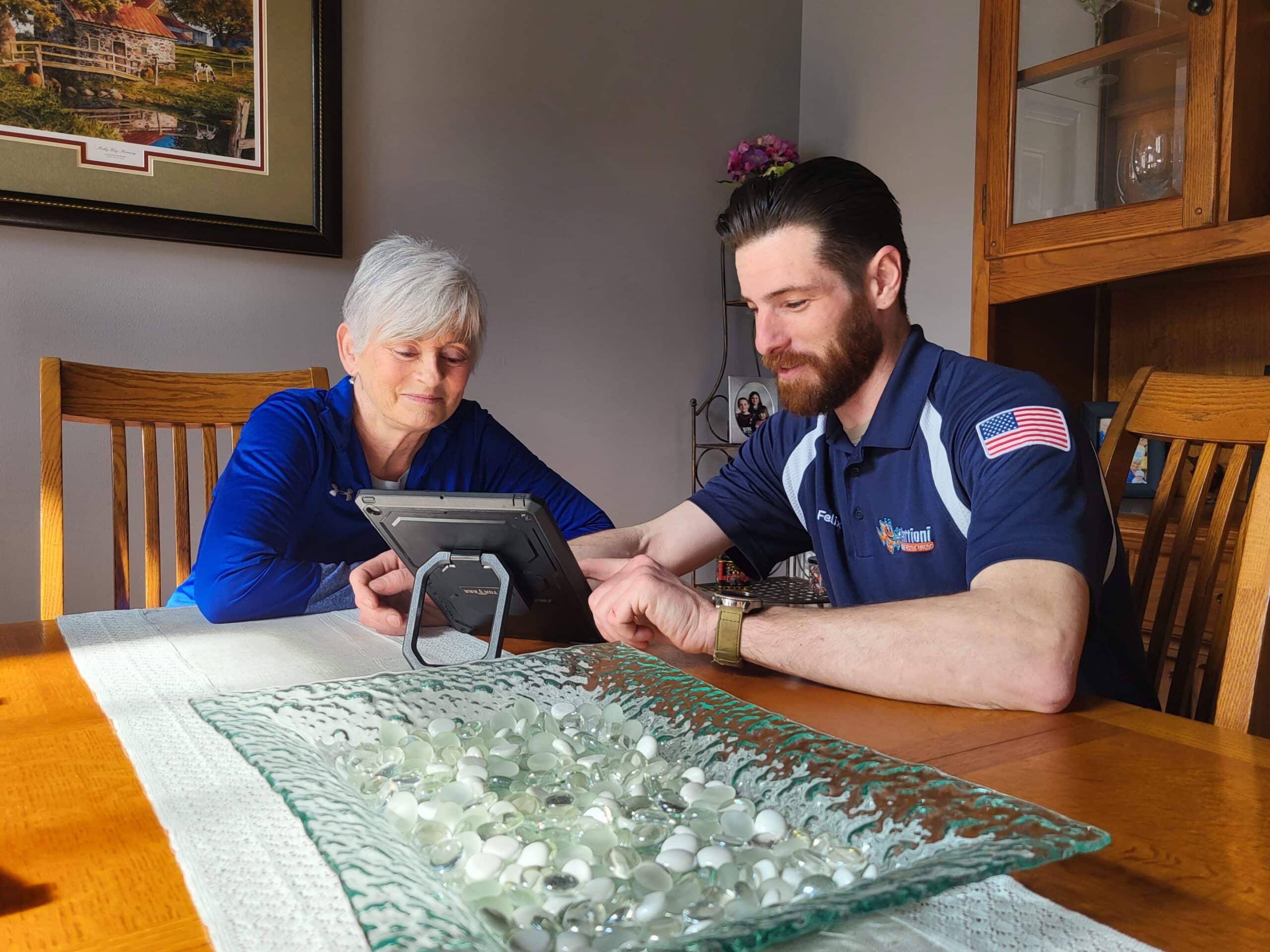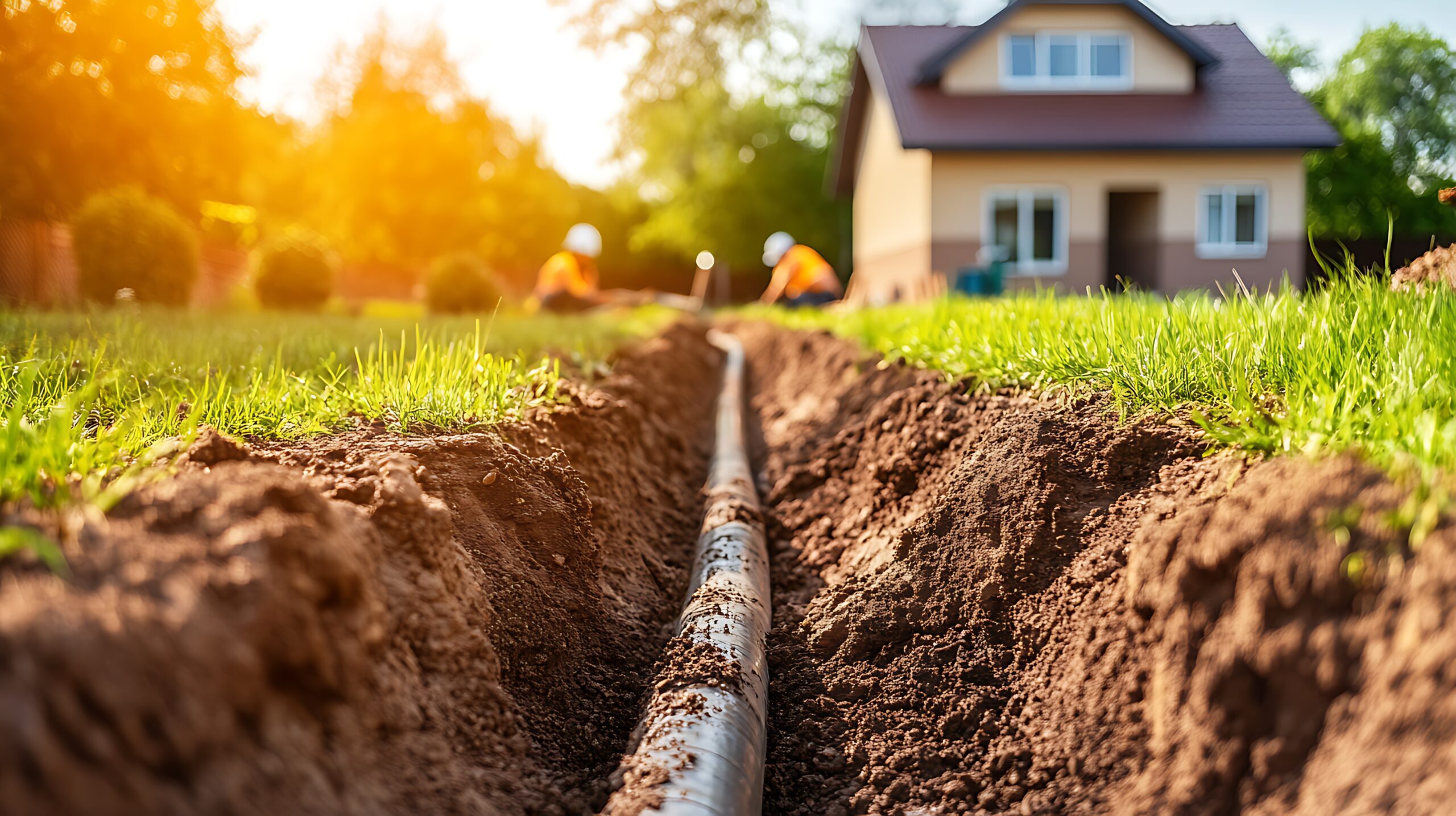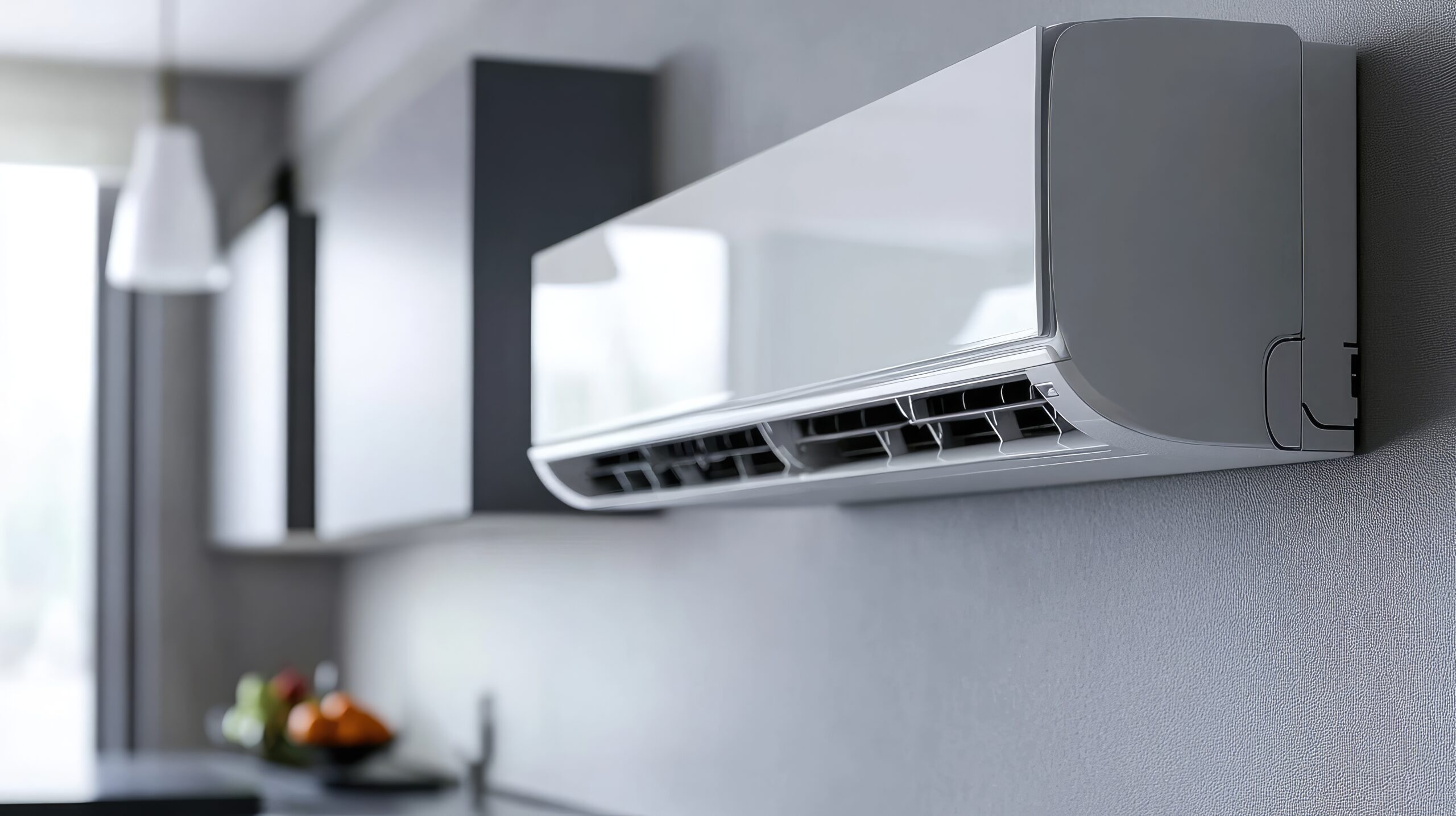|
Getting your Trinity Audio player ready...
|
Last Revised: 1/9/2025
There are numerous benefits to replacing both your furnace and AC at the same time. Understanding what goes into the installation costs of both systems can help you determine which ones are for you.
Investing in both new heating and cooling systems at the same time has numerous benefits. For starters, you’ll get the most substantial improvement in comfort and efficiency, but you’ll also see some savings on the installation costs compared to having the jobs done separately.
There are a few more advantages to bundling your HVAC installations, so if you’re on the fence about getting both systems replaced simultaneously, it’s not a bad idea to do some quick research on it to help make our decision.
If you’re reading this article, however, you’ve either already decided, or are close to deciding, to upgrade both your air conditioner and furnace at the same time.
If this sounds like you, then learning about the exact factors that impact how much the combined installation will cost, and the savings you’ll see, is probably at the top of your mind.
You’ll be happy to hear that while your exact cost savings will vary based on the systems that you choose to install, we’ve estimated that bundling furnace and AC installations will save you an average of $2,000 and $5,000.
These savings are tied to reduced labor time and specials offered by HVAC installation companies.
When it comes to totaling up the installation costs of both systems, the following seven variables will determine your bottom line:
In this article, we’ll explore how these different factors can sway your total costs so you can better understand what system may be best for you.
Let’s start by looking at the first and most important decision you’ll have to make: the system type.
1. System Type & Equipment Matching
Both furnaces and AC have a few different options you’ll be able to choose from, in terms of both heating fuel source and temperature throttling capabilities.
TYPES OF TEMPERATURE THROTTLING CAPABILITIES
Virtually all heating and cooling systems have the same three options when it comes to their capacity to throttle temperature outputs (measured in tonnage and British Thermal Units):
- Single-stage units operate at either 100% capacity or not at all.
- Two-stage units have an added run stage at roughly 65% capacity.
- Variable-speed units can run at virtually any speed.
Performance, energy efficiency, and the installation price typically increase as you go from single-stage to two-stage to variable-speed. This is a decision that’ll impact your comfort and monthly utility bills once it’s installed.
EQUIPMENT MATCHING
Since AC units borrow your furnace’s blower motor, you’ll have to consider how both systems pair with one another during your replacement search. We call this equipment matching:
- Single-stage air conditioners are compatible with virtually any type of furnace.
- Two-stage air conditioners require a two-stage or variable-speed furnace.
- Variable-speed air conditioners are only compatible with variable-speed furnaces.
You can see how one of your HVAC systems can steer your replacement search for the other. This is another benefit of replacing both systems simultaneously: you’ll be able to consider both systems with greater flexibility to fit your needs.
Here’s a birds-eye view of all the possible price ranges for each different type of system:
- Single-stage furnaces typically range between $5,500 and $7,500
- Two-stage furnaces typically range between $8,000 and $12,000
- Variable-speed furnaces typically range between $13,000 and $14,000
- Single-stage air conditioners typically range between $6,000 and $12,000
- Two-stage air conditioners typically range between $10,000 and $14,000
- Variable-speed air conditioners typically range between $14,000 and $20,000
To get an idea of your total cost to install both systems simultaneously, first add together the rough price ranges of each system type. Then, you can factor in a discount of roughly $2,000 – $5,000 for installing them at the same time, stemming from labor time savings and sales specials based on the equipment.
One factor at play in where your total installation cost will fall within these ranges is the fuel source of the system.
HEATING FUEL SOURCE OPTIONS
Your furnace fuel options are oil, propane, and natural gas. Natural gas and propane furnaces are similar enough to consider the price difference between the two to be negligible. However, keep in mind that natural gas requires a public access hookup, which is dependent on where you live.
Propane and natural gas furnaces tend to be anywhere from $500 to $1,000 less expensive to install than an oil furnace.
Our next two factors, heating capacity and energy efficiency, also play vital roles in how your installation costs shape up.
2. Heating and Cooling Capacity Needs
Along with the system type, the heating and cooling capacity are the most influential factors in the price of installation.
Heating and cooling capacity refers to the amount of heat that a heating system can produce or that a cooling system can remove from a home.
We sometimes call heating and cooling capacities the “size” of the system.
In general, the greater the heating or cooling capacity needed, the higher the cost of the system.
Matching your home with an appropriately sized HVAC system will maximize your home’s comfort, energy savings, and the longevity of the system.
When it comes to determining the unique heating and cooling capacity of your home, the following factors all come into play:
- Square footage and insulation rating of your home
- The total number and efficiency of your windows and doors
- The number of people living in your home
- The direction that your home is facing
- The appliances in your home
- The color of your roof and exterior
- The interior layout of your home
The size of your existing ductwork also plays a very important role in determining the appropriate size furnace for your home.
Ductwork that’s too narrow will not be able to facilitate the airflow from a system that might otherwise fit your home.
If your ductwork is too wide, it’ll need an oversized system that’ll hinder efficiency and the comfortability of your home.
Don’t hesitate to talk with your HVAC professional about your existing ductwork and how it impacts your new system options. Modifications to your ductwork are sometimes the best bet for solving this.
3. Energy Efficiency of the System
The classification of a system as single-stage, two-stage, or variable-speed begins to indicate how well that system uses its fuel or electricity.
However, there are a few rating scales that do a better job of representing an HVAC system’s efficiency.
These are the SEER2 and AFUE ratings, for cooling and heating system efficiencies respectively.
- The Seasonal Energy Efficiency Ratio, or SEER2, rating is from 13 to 26 and measures a cooling system’s efficiency under specific conditions.
- The Annual Fuel Utilization Efficiency, or AFUE, evaluates what percentage of a heating system’s fuel is converted into heat. You can think of these percentages less as a score or rating, and more as a measurement of how many cents of heat the system produces per dollar of fuel.
Here’s a closer look into what we view as low, average and high SEER2 efficiency ratings for cooling systems:
- A low-efficiency cooling system scores between a 13 - 14 SEER2 rating.
- An average-efficiency cooling system scores between a 14.1-17 SEER2 rating.
- A high-efficiency cooling system scores between a 17.1-26 SEER2.
With furnaces, the most notable segmentation of system efficiencies is between what are commonly called 80% AFUE and 90% AFUE furnaces.
Unique features like a second heat exchanger and condensation drain play a role in increasing furnace efficiencies into the 90% range and beyond. Today, the most efficient furnaces available are 98% AFUE.
While a more energy-efficient system will save you money on monthly utility bills, in most cases, the higher a system’s AFUE or SEER2 rating, the higher the upfront installation price will be.
4. The Complexity of Installation & Ductwork Modifications Needed
ACCESSIBILITY OF THE INSTALLATION, MODIFICATIONS & ADDITIONAL MATERIALS NEEDED
HVAC system installations sometimes require additional work such as:
- Removing infrastructure like crown molding to create enough access to the installation site.
- Disassembling the old and/or new equipment to allow it to be removed or brought into the installation site.
- Cutting holes through drywall or the exterior of your home to run lines or wiring.
- Hanging the outdoor AC unit on the side of the house if there is no space for it on the ground.
- Major duct modifications to physically fit the system or to handle the proper amount of airflow needed.
- Crawl space installations require installers to work while laying down.
ADDED MATERIALS
Your new heating and cooling systems may require a new refrigerant line, wiring or ductwork to be installed properly.
The three factors impacting just how much any additional materials will raise the total installation cost are the type of material, the distance that needs to be spanned, and the difficulty of accessing that distance.
- Refrigerant line: The lines connecting your indoor and outdoor cooling units could span 75 feet or more.
- Wiring: Wiring may also need to span up to 75 feet or more.
- Ductwork: Modifications to the ductwork closest to your furnace may be needed, and in some cases a plenum or return drop may need to be added for the system to be installed properly.
ATTIC INSTALLATIONS
If your heating and cooling systems will be housed in your attic, some potential factors could impact the logistics of the job:
- Ease of access: Lifting the system up a ladder and fitting it through a narrow opening.
- Workability: Walking on joists if there is no flooring can add to the complexity of the job.
- Temperature: Summer attic installations sometimes require additional manpower to allow the installers to rotate working as temperatures in the attic are usually over 125°F and can reach up to 160°F.
Making the necessary considerations to provide a quality installation can increase the upfront price, however doing so will make sure that your new systems are set up for success and longevity, which will almost certainly save you on repair costs.
5. Accessories & Additional Systems
HVAC accessories like indoor air quality products and smart thermostats can enhance your home’s comfort and the accessibility of your heating and cooling systems. These additional investments add to the total cost of your HVAC installation.
Whole-House Dehumidifiers cost between $3,000 and $4,300 to install, depending on the system you choose.
Whole-House Humidifiers cost between $1,300 and $3,300 to install, depending on the system you choose.
Whole-House Air Scrubbers cost around $1,400 to install.
Whole-House Air Purifiers cost between $1,500 to install.
Fresh Air Intake Systems cost between $2,000 and $6,000 to install, depending on the type of system you choose.
Smart Thermostats cost between $700 and $1,200 to install, depending on the model.
6. Geography
Like many other goods and services, your geographic location will also influence the price of installing a new heating and cooling system.
For instance, an HVAC installation in a large city like New York will be more expensive than in a small town. The socio-economic status of where you live plays a part in this as well, however these price differences aren’t easily measured.
Although this factor is out of your control, staying aware of it will give you a better idea of how much your installation should cost, and if you’re getting a good quote or not.
7. Quality of the Installation Company
Not all HVAC installation companies are created equal. The quality of the company providing your installation services, and how they train their installers, is going to affect the total cost of installing your new HVAC systems.
It’s not uncommon for a less professional company that overlooks the details of a quality installation to offer lower prices. If you get an appealing quote from a service provider who lacks testimonials or pictures of previous work, it might be a red flag that you’re talking to a corner-cutter installer.
Poor installations often follow cheap prices, which has several negative consequences on your new system’s performance, efficiency, and longevity.
Conversely, an HVAC installation company that provides trained, licensed, and experienced installers will deliver a quality installation. It may come at a higher price, but a quality HVAC installation will set your new system up for optimal performance, efficiency, and longevity.
Considering how future repair costs and efficiency levels impact the long-term costs tied to your heat pump system helps to put the quality of installation into context.
Making Your Heating and Cooling System Installation Decision
As you can see, there are a lot of variables in play that influence the bottom-line costs of replacing both your heating and cooling systems. Many of these factors are out of your control entirely, however some factors are decisions you’ll need to make based on your goals.
Once again, you can expect to save between $2,000 and $5,000 on total installation costs by bundling both your furnace and air conditioner together.
If you haven’t already, here is a sound approach to your heating and cooling system installation search.
- Rank your home heating and cooling priorities.
- Compare your priorities to the information covered in this article.
- Speak with an HVAC professional to narrow down your search to a few options.

Following these steps will help you start to sift through all the options available and narrow down your search to a small list of options suited for your home.
When it comes time to talk with an HVAC professional, be sure to ask all of your questions as understanding your options is the best way to make a sound decision for the future of your home.
Our HVAC professionals are ready to guide you through this important process. To speak with the Mattioni team about furnace pricing, call us at (610) 400-8510 or schedule an appointment online today.




